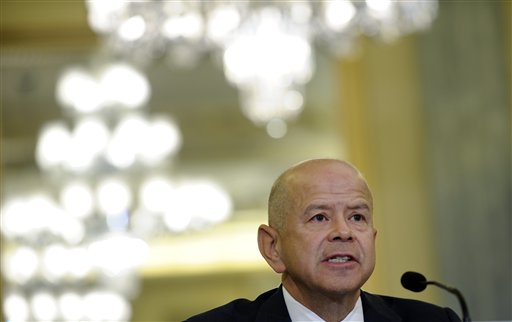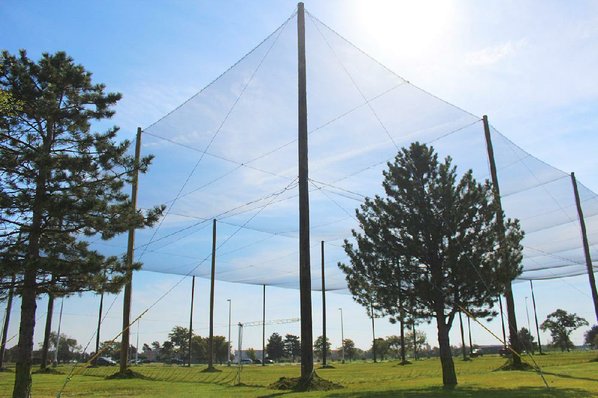
Good morning, everyone. Thank you for taking the time to be here.
Unmanned aircraft use has increased dramatically in recent years. With this surge in popularity has come growing concerns about their safe operation in our nation’s airspace.
In recent months, we’ve seen an increase in reports of UAS coming too close to manned aircraft and airports. Some have interfered with wildfire fighting in California, and one crashed into a stadium during a U.S. Open tennis match.
These incidents make it clear: we must work harder to ensure a strong culture of safety and responsibility among unmanned aircraft enthusiasts.
There’s no single solution for how we do this. The integration of unmanned aircraft is multi-faceted, and our approach must be as nimble as the technology itself.
One tool we’re going to use is registration – and that’s why we’re here today.
Unmanned aircraft have countless potential uses – from package delivery to tasks that are dangerous for people or manned aircraft to perform. No one wants to see this promising technology overshadowed by an incident or accident that could easily be avoided with proper training and awareness of the safety principles that are now second nature in manned aviation.
We invited you to assist us on this task force because each of you brings extensive knowledge about unmanned aircraft, technology, public policy and the aviation industry. You represent a wide range of viewpoints. And you are all united by a common goal: the safe integration of unmanned aircraft.
We’re hopeful this task force can provide the FAA guidance on some important questions as to how we determine the best way to register aircraft under 55 pounds:
- How do we make registration as easy as possible for consumers while providing accountability?
- What products should we exclude from registration based on weight, speed, altitude and flying time?
- What information should we collect during the registration process, and what should we do with the data?
- Should every unmanned aircraft sold have its own serial number, or how to tie particular aircraft to a particular user?
- Should the process include a formal education component before an aircraft can be registered?
- Should registration be retroactive and apply to unmanned aircraft that are now in the system?
- Should there be an age requirement for registration?
Ultimately, we want to make registration as easy as possible for consumers, to relieve them of the complexity associated with registering larger, manned aircraft.
Your recommendations will be invaluable as the FAA moves quickly to stand up this new system.
We’re working on a tight timetable – Secretary Foxx set a deadline of November 20th for the task force to complete its recommendations. This reflects the urgency of the task at hand.
The holidays are weeks away, and unmanned aircraft are going to be a popular gift item. By some estimates, 700,000 new aircraft could be in the homes of consumers by the end of the year. This means unmanned aircraft could soon far outnumber manned aircraft operating in our nation’s airspace.
Many of these new aircraft are bringing new users to aviation – most with little or no experience with aviation regulations.
Registration will give us an opportunity to educate new operators about airspace rules so they can use their unmanned aircraft safely. It will also help us more easily identify and take enforcement action against people who intentionally violate the rules or operate unsafely. A perfect example of this occurred last week, when a drone carrying mobile phones, drugs and hacksaw blades crashed into a prison yard in Oklahoma. Perhaps registration would have helped authorities quickly identify the owner.
We realize that most people want to use their aircraft safely for enjoyment. Registration benefits users and the government alike because it encourages education while providing a mechanism for helping the FAA fulfill its mission of keeping the nation’s skies safe.
I recently announced the FAA’s new Compliance Philosophy, which uses education and training to ensure we have safe operators.
At the same time, this doesn’t mean we’re going to go easy on enforcement.
But in cases where we find simple mistakes or a lack of understanding, we’ll use tools like training and education to ensure compliance with the regulation and compliance with the standard.
This starts with giving operators the tools and knowledge they need to fly safely. Toward this end, we released the beta version of a new smartphone application called “B4UFLY,” which alerts UAS operators to restrictions or requirements in effect at their current or planned flight location.
The FAA and its government and industry partners are also conducting outreach through the Know Before You Fly and No Drone Zone campaigns, most notably during the recent visit by the pope.
But for those who don’t follow the rules, we need to continue our enforcement efforts.
Last month, the FAA proposed a $1.9 million civil penalty against a company that we allege knowingly conducted dozens of unauthorized flights over Chicago and New York. This sends a clear message to others who might pose a safety risk: Operate within the law or we will take action.
As registration, education and enforcement focus on enhancing safety around recreational use, we’re also working to put a commercial regulatory framework in place.
Earlier this year, we proposed a rule that would routinely allow small unmanned aircraft operations we know to be safe, and we plan to finalize it by late spring.
Meanwhile, we’re approving requests for commercial operations on a case-by-by-case basis. To date, we’ve approved more than 2,200 authorizations that allow unmanned aircraft to be used for a wide variety of different purposes.
Under our Pathfinder program, we’re working with industry to determine how to safely expand unmanned aircraft operations beyond the parameters of our proposed rule. BNSF Railway recently used an unmanned aircraft to inspect miles of its tracks in New Mexico, demonstrating beyond visual-line of sight capabilities. The flight marked the first of what we hope will be many successful Pathfinder tests and flights.
Integrating unmanned aircraft into our nation’s airspace is a big job, and it’s one the FAA is determined to get right. We know that we need to work closely with our partners in government and the private sector for this to succeed. This task force is a sign of our commitment to that partnership and we thank you for your work.
Please think big, and think outside the box. Take the interests of all stakeholders, of everyone who will be affected by registration, into consideration, and you need to factor that into your conversations and deliberations. And please – do not worry about achieving perfection. Your ideas will enable us to lay the groundwork for registration, but by no means is it the last word on registration.
You have a lot to accomplish in the next three days. I have no doubt this group will be able to meet the challenge, and I look forward to your recommendations. Given the urgency of this issue, the DOT and the FAA will move quickly to consider your suggestions as we create a registration system that works for the FAA, consumers, and the safety of our nation’s airspace.
Thank you again for dedicating the time to this important undertaking.
http://www.suasnews.com/2015/11/39536/faa-administrator-michael-huerta-opens-uas-registration-meeting/

